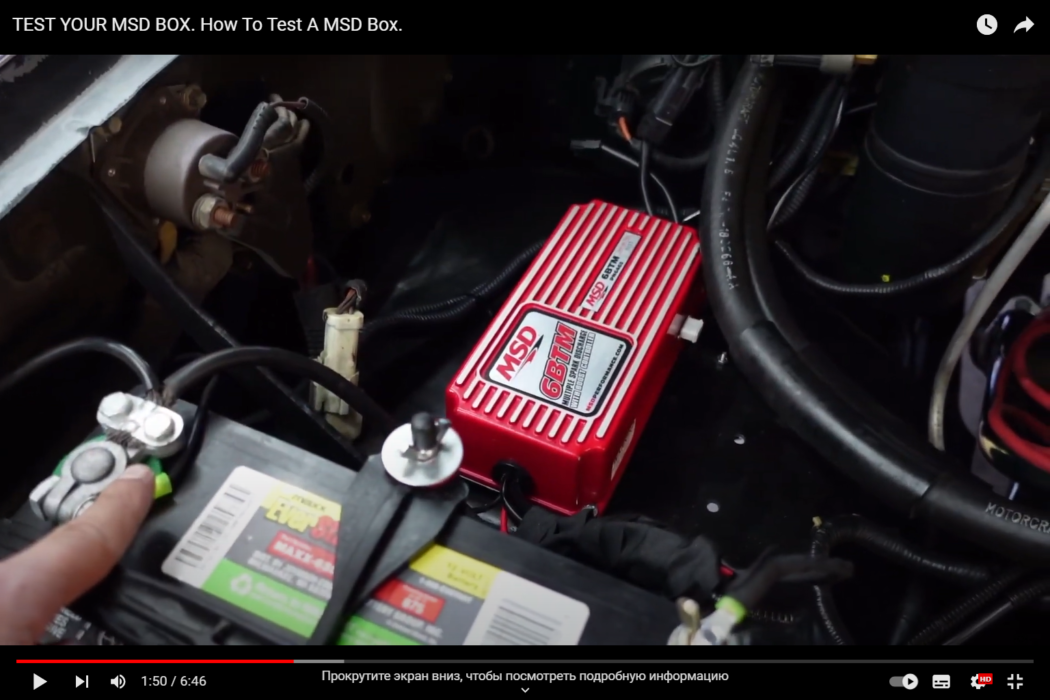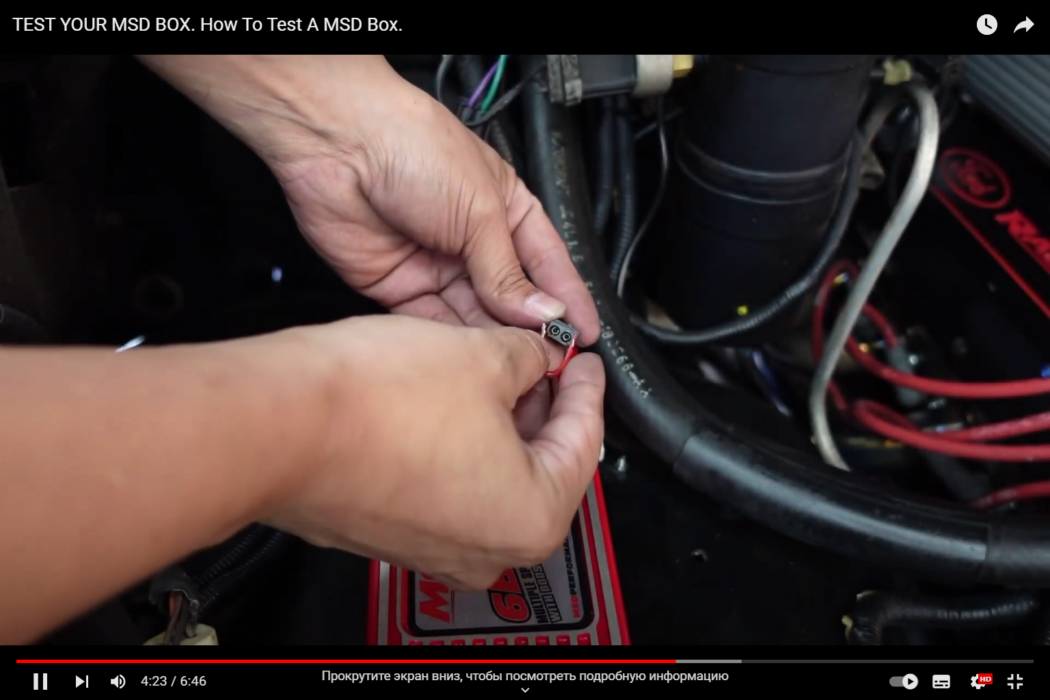The ignition system is the heart of your vehicle’s performance, and the MSD ignition box plays a crucial role. Recognizing the signs of a failing ignition box can save you from unexpected breakdowns and repair bills. In this comprehensive guide, we’ll walk you through the 11 symptoms that indicate your MSD ignition box might be failing.
1. Engine Misfires
Engine misfires can be frustrating and concerning for any vehicle owner. These misfires occur when the combustion process in the engine’s cylinders doesn’t happen as smoothly as it should. A failing MSD ignition box can play a significant role in causing engine misfires.
Symptoms:
- Hesitation or jerking during acceleration;
- Loss of power and reduced fuel efficiency;
- Unusual engine vibrations.
When the MSD ignition box fails, it may send inconsistent signals to the spark plugs, disrupting the timing of the spark ignition. This can lead to misfires, which result in a lack of power during acceleration and an overall decrease in engine performance.
2. Difficulty Starting
Experiencing difficulty when trying to start your car can be frustrating and worrisome. A failing ignition box can contribute to this problem by affecting the spark timing necessary for the engine to fire up smoothly.
Symptoms:
- Engine cranking but struggling to catch;
- Extended cranking time before the engine starts;
- Intermittent starting issues.
If the ignition box is failing, it might not provide the correct spark timing to initiate the combustion process. This can result in the engine cranking without starting, leaving you stranded and in need of assistance.
3. Stalling at Low Speeds
Imagine your car suddenly stalling while driving at low speeds, such as during idling or when slowing down for a turn. This unsettling situation can indicate a potential problem with the MSD ignition box.
Symptoms:
- Car stalling during idling or deceleration;
- Engine shutting off unexpectedly at low speeds;
- Difficulty maintaining a consistent low-speed operation.
The inconsistent sparks produced by a failing ignition box can lead to engine stalls, especially when the engine is operating at low speeds. This can create dangerous situations, particularly when driving in traffic or navigating tight turns.
4. Poor Fuel Efficiency
A drop in fuel efficiency is often a clear sign that something is amiss within your vehicle’s engine system. A malfunctioning MSD ignition box can contribute to this decline in fuel economy.
Symptoms:
- Reduced miles per gallon (MPG);
- Frequent visits to the gas station;
- Unexplained increase in fuel consumption.
When the ignition box isn’t functioning properly, it can cause irregular combustion within the engine. This results in inefficient fuel burning and wastage, leading to poor fuel efficiency and a need for more frequent refueling.
5. Backfiring
The sound of a loud pop or bang from your exhaust can be startling and is a clear indication of ignition problems. Backfiring occurs when unburned fuel ignites in the exhaust system, and a failing ignition box can contribute to this issue.
Symptoms:
- Audible backfire noise from the exhaust;
- Visible flames or sparks from the tailpipe;
- Backfiring during deceleration or gear shifts.
An MSD ignition box that’s not working correctly can cause misfires, allowing unburned fuel to enter the exhaust system. When this unburned fuel ignites in the hot exhaust, it leads to the distinctive backfire sound.
6. Engine Performance Fluctuations
If you’ve noticed that your car’s performance is inconsistent, with varying levels of power and responsiveness, a failing MSD ignition box could be a contributing factor.
Symptoms:
- Uneven acceleration and deceleration;
- Rough idling or engine vibrations;
- Reduced power during acceleration.
A malfunctioning ignition box can disrupt the timing and quality of the spark produced, leading to irregular combustion cycles. This inconsistency in combustion can result in the engine’s performance fluctuating and a lack of smooth power delivery.
7. Warning Lights
Modern vehicles are equipped with advanced onboard diagnostics systems that monitor various aspects of the engine’s operation. If your MSD ignition box is failing, it can trigger warning lights on your dashboard, providing important insights into the health of your ignition system.
Symptoms:
- Check engine light illuminated;
- Other warning lights related to engine performance;
- Onboard diagnostics system indicating ignition-related issues.
These warning lights are crucial indicators that should never be ignored. They serve as early warnings that there’s a problem within your ignition system, and addressing the issue promptly can prevent further damage and costly repairs.
8. Unresponsive Acceleration
An unresponsive accelerator pedal can be a frustrating and potentially dangerous symptom of a failing MSD ignition box. When the ignition box fails to send the correct timing signals to the spark plugs, it can result in delayed or weak spark ignition, leading to sluggish acceleration.
Symptoms:
- Sluggish response when pressing the accelerator pedal;
- Delayed acceleration, especially when merging onto highways;
- Inconsistent power delivery during acceleration.
An MSD ignition box that’s not functioning properly can disrupt the coordination between the ignition system and the engine’s performance, leading to noticeable delays in power delivery.
9. Increased Emissions
A malfunctioning ignition box can impact the combustion process within the engine, which in turn affects the emissions produced by the vehicle. If you’ve noticed an increase in exhaust emissions, it could be linked to an issue with your MSD ignition box.
Symptoms:
- Visible increase in tailpipe emissions, such as smoke or pollutants;
- Failed emissions test during vehicle inspection;
- Strong smell of unburned fuel from the exhaust.
The incomplete combustion caused by ignition misfires can result in higher levels of unburned fuel and pollutants being released into the exhaust system, leading to increased emissions.
10. Rough Idling and Vibrations
A smooth and steady idle is a sign of a well-functioning engine. However, a failing MSD ignition box can disrupt the engine’s idling process, causing rough idling and noticeable vibrations.
Symptoms:
- Engine shuddering or vibrating while at a standstill;
- Fluctuating RPM (revolutions per minute) during idling;
- Unsteady engine sounds during idle periods.
A failing ignition box can result in inconsistent spark ignition, leading to irregular combustion cycles during idle. This disruption can cause the engine to vibrate and produce rough idling characteristics.
11. Engine Warning Signs in Cold Weather
Cold weather can exacerbate existing ignition issues, making them more noticeable. A failing MSD ignition box may struggle to provide reliable sparks in colder temperatures, leading to specific symptoms during winter months.
Symptoms:
- Increased difficulty starting the engine in cold weather;
- More frequent engine misfires when it’s cold outside;
- Reduced engine performance in low temperatures.
Cold weather can make the ignition system’s demands more critical. If your ignition box is already compromised, it may struggle to function properly in chilly conditions, resulting in a range of symptoms.

Diagnostic Tools and Testing
When facing potential issues with your MSD ignition box, diagnostic tools can be invaluable in pinpointing the problem. Mechanics use specialized tools to analyze ignition system performance and identify the root cause of symptoms.
Diagnostic Process:
- Scan Tool: A scan tool can retrieve error codes stored in your vehicle’s onboard computer system, providing insights into ignition-related issues;
- Ignition Tester: This tool measures spark strength and consistency to determine if the ignition box is functioning correctly;
- Multimeter: A multimeter can assess the electrical signals sent to the ignition system, helping to identify irregularities.
Using these diagnostic tools, mechanics can accurately diagnose whether the MSD ignition box is failing or if the problem lies elsewhere in the ignition system.
Addressing Ignition Box Issues
Once you’ve identified a failing MSD ignition box as the culprit behind the symptoms, it’s crucial to take prompt action to address the issue. Depending on the severity of the problem and the specific component causing the failure, you have a few options.
- Repair or Replace: In some cases, ignition box issues might stem from a loose connection or damaged wiring. These issues can often be repaired without the need for a full replacement;
- OEM Replacement: Opting for an original equipment manufacturer (OEM) ignition box ensures compatibility and quality. OEM parts are designed to meet the manufacturer’s specifications;
- Aftermarket Upgrade: Upgrading to a high-performance aftermarket ignition box can enhance your vehicle’s ignition system, improving spark delivery and overall engine performance.
Always consult with a professional mechanic to determine the best course of action based on your vehicle’s make, model, and specific symptoms.

Conclusion
Recognizing the symptoms of a failing MSD ignition box is essential for maintaining the performance and reliability of your vehicle. From engine misfires to warning lights, these signs can help you identify ignition-related issues before they escalate into major problems. If you experience any of these symptoms, it’s crucial to consult a qualified mechanic for a thorough diagnosis and timely repairs.
FAQs
Yes, a failing ignition box can lead to unburned fuel entering the exhaust system, potentially damaging the catalytic converter and other components.
It’s not recommended. Ignition issues can lead to reduced performance, stalling, and even further damage if left unresolved.
The lifespan varies, but around 50,000 to 60,000 miles is a common interval. However, it’s best to follow your vehicle manufacturer’s recommendations.
In most cases, MSD ignition boxes are replaced rather than repaired, as the internal electronics can be intricate.
If you notice any of the symptoms mentioned in this guide, it’s advisable to consult a professional mechanic for a proper diagnosis and timely repairs.











